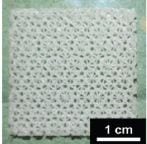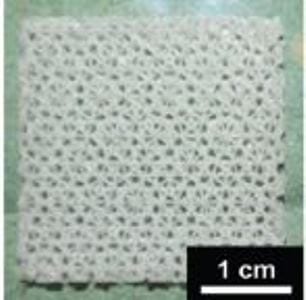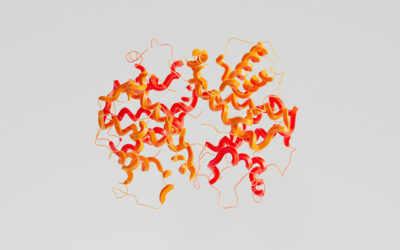Breast cancer, which develops in breast tissue, is one of the most frequently diagnosed cancers and the leading cause of cancer death among women worldwide. Current strategies in regenerative medicine are focused on the restoration of pathologically altered tissue architectures, through transplantation of cells in combination with supportive scaffolds and biomolecules.

Photograph showing the copolymer scaffold printed using the Bioscaffolder.
Clinical interventions to anatomically reconstruct the breast include the use of prosthetic silicone-based implants, autologous fat tissue transplantation and free tissue flap transfers. Silicone [poly (dimethylsiloxane)] gel, which is used in breast implants, has been known to migrate through intact silicone elastomer shells resulting in the clinically observable “gel bleed” on the implant surface. To overcome the limitations of currently used breast reconstructive techniques, an impetus has been steadily growing towards cell-based regeneration of adipose tissue. Tissue engineering and regenerative medicine approaches aim to move the field away from methods which replace damaged tissue with permanent implants, towards more biological solutions that are able to restore structure and function of autologous tissue; with the ultimate aim of restoring the structure and haptics of the native breast. Several studies have indicated that scaffolds may play a major role in promoting and maintaining adipose tissue volume during the regeneration process.
In a recent article published in Polymer International, Dr. Patrina Poh, TUM’s University Hospital, Department of Experimental Plastic Surgery and Hand Surgery, and colleagues, synthesized a copolymer scaffold from Polycaprolactone (PCL) and poly-D, L-lactic acid (PDLLA). The development of a clinical, translatable method of engineering process requires investigation of several components. Thus, the copolymer scaffolds underwent rapid degradation in vitro which was characterised by the loss of scaffolds. Although in its current form, the copolymer did not yield properties suitable for breast tissue engineering, it paves the way for promising future applications in the engineering of elastomeric tissues.

















